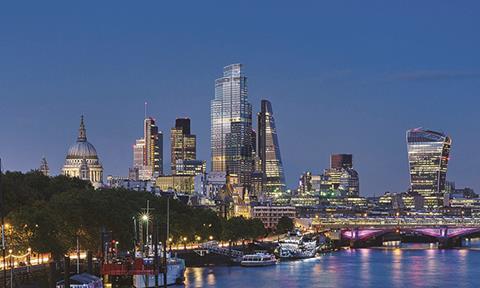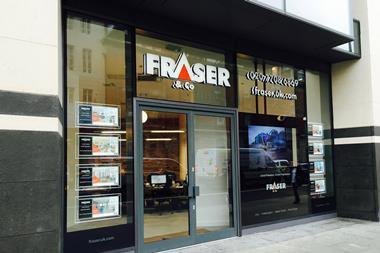A 1.4m sq ft speculative office development? Now? In spite of the Brexit vote impact on ‘the City’?

In business decisions, balancing absolute versus relative risk and short-term considerations versus long-term objectives is critical. That is precisely what we have had to do, and not just over the last four months.
As developer of the 2m sq ft (gross) 22 Bishopsgate, the former Pinnacle site, the Lipton Rogers team have by now been working on the new ‘22’ for over six years.
For most of those six years, the funding for such a huge and complex project posed a major challenge.
However, working in collaboration with AXA IM - Real Assets as investment manager, a consortium of international investors was brought together, united by the view that super-prime real estate in London is central to a long-term global investment strategy.
Absolutely key to the investment decision were Stuart Lipton’s and Peter Rogers’ advanced plans to deliver a truly world-class building, conceived over the previous four years working with a first-rate professional team led by PLP.
At 62 stories, and the tallest building at the centre of the City cluster, 22 is also the largest-ever office tower in Europe, designed literally and figuratively to ‘tower’ above the competition.

It offers flexibility, connectivity, technology, community and collaboration, in addition to more than 100,000 sq ft of dedicated spaces for social, intellectual, health, fitness and wellbeing uses.
With a rich array of food and dining offers, it is an exciting and rewarding working environment and destination, not just another office building. Add spectacular cityscape views and an unparalleled capacity to offer space optionality to major prelets (which may not be able to predict how much space they will need in three years’ time), 22 should punch above its considerable weight.
Exceptional as 22 will be, commencing a circa £2bn speculative building in the City just as Brex(sh)it hits the fan suddenly gets a whole lot harder. The variables are numerous and challenging but the more you look at the data and stress test the economic and financial analysis of hard versus soft Brexit, the clearer the picture becomes. There are three key issues:
Limited supply
Vacancy rates in the City (and central London) are at record lows, and there is only around 500,000 sq ft of new City office space available. This is partially offset by committed new supply over the next three years being slightly above average - but around 50% is prelet. So there is only around 3.2m sq ft of new spec space committed and with Brexit uncertainties, further new starts will be much fewer than expected pre-June.
Occupier demand
Surprisingly, over the last five years, financial occupiers have accounted for only 20% of City office take-up. The City demand profile today reflects the wider central London market, with TMT take-up now exceeding financial and growing fast. There will be 30 million lease events in central London between 2019 and 2023 and many tenants will be forced to move. Consequently forecasts of demand for new space are still a healthy 12.5m sq ft over the next five years.
Now? Or never?
You could certainly hold back and wait for a prelet - but even if you landed the biggest prelet in town (say 300,000 sq ft) you are still going to be building 1.1m sq ft spec. With 1.4m sq ft of space, timing the cycle is vital. Demand is impossible to predict three years out. Supply on the other hand is not. Developing when there will be limited competition is absolutely key for a project of the size of 22. With 12.5m sq ft of projected new space demand and only 3.2m sq ft of committed supply, taking on the letting risk now seems sensible. Even during the GFC, the take-up of new space was more than 8m sq ft.
The only certainty Brexit brings is uncertainty. Are we about to enter a winter of despair or can we look forward to a spring of hope? Brexit views of the impact on the City are generally pessimistic. But this is a tale of two Cities. Much of the old City moved to Canary Wharf some time ago and the City that remains is no longer a grey financial ghetto but an exciting business environment open to the full range of London occupiers. Ultimately, the new tower at 22, the largest in Europe, is not just about the City, old or new. It’s about a world-class building for London.
Rupert Clarke is managing partner at Lipton Rogers Developments






























No comments yet